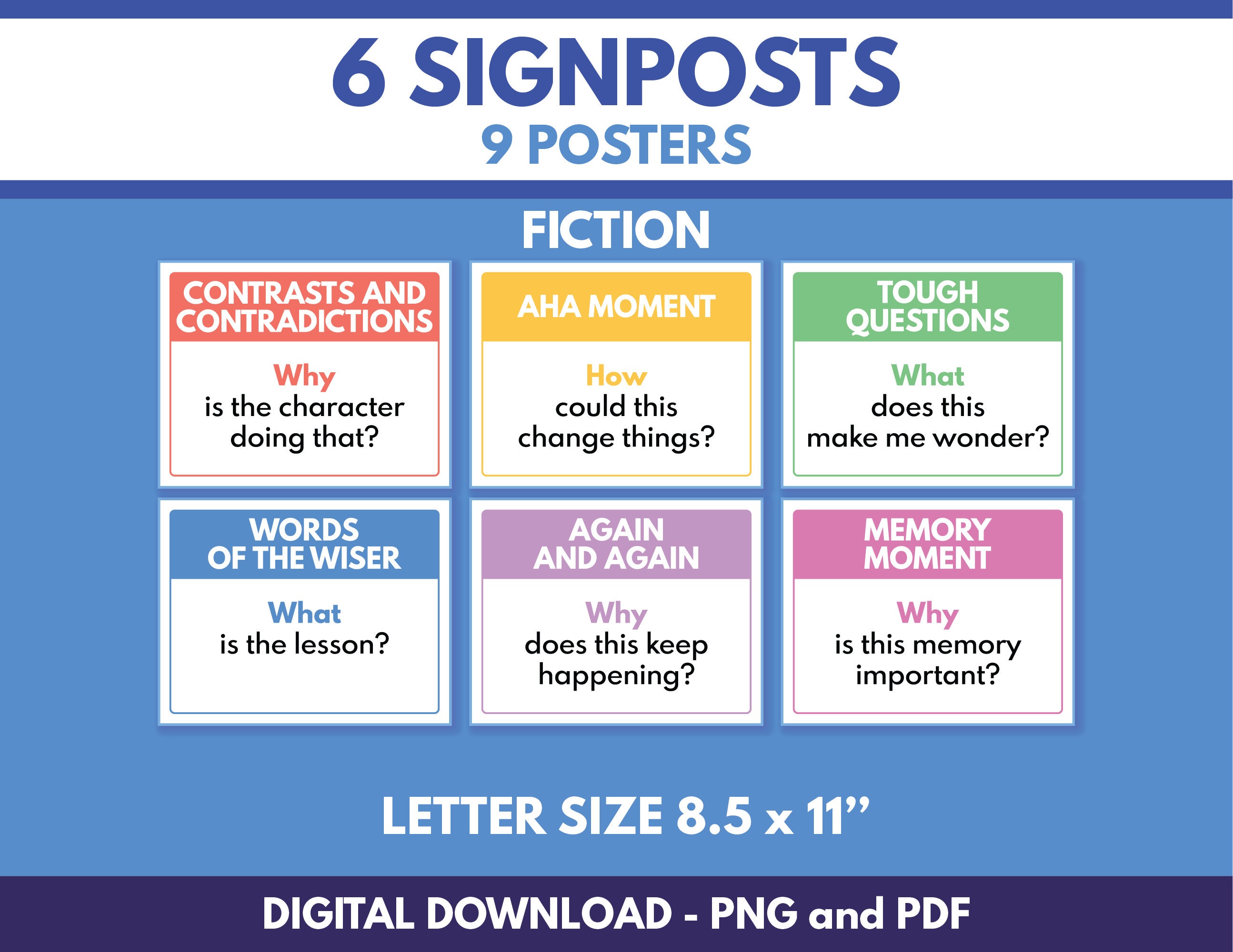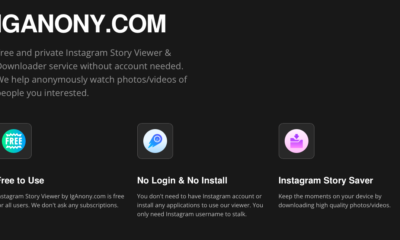Uncategorized
What Are Narrative Signposts? Easy Guide for Everyone!
Published
5 months agoon
By
AndersonNarrative signposts are crucial tools for crafting engaging, clear, and impactful stories. Whether you’re a writer, a teacher, or simply a lover of stories, understanding narrative signposts can help you appreciate storytelling on a deeper level. In this guide, we’ll walk you through everything you need to know about narrative signposts, from what they are to how they can improve your storytelling skills. Let’s dive in!
What Are Narrative Signposts?
Narrative signposts are clues, markers, or signals that guide readers or audiences through a story. They serve as guideposts, helping readers navigate through the beginning, middle, and end of a narrative without feeling lost or confused. Think of them as traffic signs in storytelling—they direct attention, build anticipation, and ensure that the journey from start to finish flows smoothly.
These signposts can appear in various forms, such as foreshadowing, plot twists, or even dialogue hints. Writers use them to organize their stories while keeping readers hooked and engaged. Without narrative signposts, stories can feel disjointed or confusing, leaving readers unsure about where the narrative is heading.
Why Do Stories Need Narrative Signposts?
Stories rely on structure and flow, and narrative signposts play a key role in achieving both. Without these markers, readers may struggle to follow the plot or connect with the characters. Narrative signposts guide readers step by step, ensuring they understand the events, themes, and emotions of a story.
For writers, narrative signposts provide clarity and focus. They help storytellers maintain a sense of direction, preventing their narratives from wandering aimlessly. For readers, these signposts create anticipation, curiosity, and emotional investment. A well-placed narrative signpost can leave readers eagerly turning pages, wanting to know what happens next.
Types of Narrative Signposts You Should Know
Narrative signposts come in different forms, each serving a unique purpose. Let’s break them down into three main categories based on where they appear in a story: beginning, middle, and ending.

Beginning Clues That Hook Readers
The start of a story is crucial for grabbing readers’ attention. Beginning clues are narrative signposts that set the stage for the plot, introduce characters, and establish the tone. These clues might include:
- A mysterious event or question that needs answering.
- A compelling character goal or conflict.
- Hints of themes or lessons that will unfold later.
For example, in The Hunger Games by Suzanne Collins, the reaping ceremony serves as a beginning clue, introducing the life-and-death stakes of the story. It immediately hooks readers and sets up the central conflict.
Middle Markers That Keep the Story Clear
In the middle of a story, narrative signposts ensure that the plot remains focused and cohesive. Middle markers help readers follow the progression of events, understand character development, and anticipate future twists. These signposts include:
- Plot twists that deepen the conflict.
- Character decisions that drive the story forward.
- Flashbacks or revelations that explain backstory.
For instance, in Harry Potter and the Prisoner of Azkaban by J.K. Rowling, the Marauder’s Map serves as a middle marker. It not only adds mystery but also becomes a pivotal tool in uncovering secrets about Harry’s past.
Ending Hints That Leave a Strong Impact
The conclusion of a story should leave readers satisfied and reflective. Ending hints are narrative signposts that wrap up loose ends, resolve conflicts, and highlight the story’s ultimate message. These can include:
- Clues that foreshadow the resolution.
- Final confrontations or turning points.
- Themes or lessons that resonate with readers.
For example, in To Kill a Mockingbird by Harper Lee, Atticus Finch’s closing arguments in court act as an ending hint. They emphasize the story’s themes of justice, morality, and humanity, leaving a lasting impression on readers.
How to Spot Narrative Signposts in Books
Recognizing narrative signposts in books requires careful reading and an awareness of storytelling techniques. Pay attention to details like dialogue, character actions, and changes in the tone or pacing of the narrative. Here are some tips to help you spot these signposts:
- Look for clues that hint at future events, such as foreshadowing or symbolism.
- Pay attention to pivotal moments, such as character decisions or major plot twists.
- Notice how the story transitions between scenes or chapters—these transitions often act as signposts.
For example, in Of Mice and Men by John Steinbeck, the recurring mention of Lennie’s strength and love for soft things acts as a subtle signpost, foreshadowing the tragic events of the story.
How Writers Use Narrative Signposts
Writers use narrative signposts to shape their stories and guide readers’ experiences. These tools help writers:
- Build suspense and anticipation.
- Develop complex characters and relationships.
- Highlight key themes and messages.
One common technique is foreshadowing, where writers plant subtle hints early in the story about events that will occur later. Another technique is callbacks, where a line or event from earlier in the story is revisited, creating a sense of cohesion and satisfaction for the reader.
For example, in The Great Gatsby by F. Scott Fitzgerald, the green light across the bay serves as a recurring signpost. It symbolizes Gatsby’s dreams and aspirations, tying the story’s themes together beautifully.
Why Readers Love Stories With Narrative Signposts
Stories with well-crafted narrative signposts are easier to follow, more engaging, and leave a stronger emotional impact on readers. Here’s why readers adore them:

How Signposts Make Stories Memorable
Narrative signposts help readers remember key moments and details. By creating a clear path through the story, these markers ensure that the plot stays fresh in readers’ minds. For instance, in Charlotte’s Web by E.B. White, Charlotte’s web messages serve as memorable signposts, driving the story forward while reinforcing its themes of friendship and sacrifice.
Ways Signposts Improve Understanding
Complex stories can be overwhelming, but narrative signposts make them accessible. They break down the narrative into manageable chunks, helping readers process events and emotions. This is especially true for young readers, who benefit from clear markers that guide them through the story.
Examples of Famous Stories Using Signposts
Many beloved stories rely on narrative signposts to create unforgettable experiences. Some examples include:
- The Lord of the Rings by J.R.R. Tolkien, where the journey to destroy the One Ring is marked by clear milestones and challenges.
- Anne of Green Gables by L.M. Montgomery, where Anne’s growth and maturity are signposted by key events in her life, such as making friends and facing personal struggles.
Can You Write Better Stories With Narrative Signposts?
Absolutely! Whether you’re writing a short story, novel, or screenplay, incorporating narrative signposts can elevate your storytelling. Start by outlining your story’s structure and identifying key moments that will guide readers. Use tools like foreshadowing, symbolism, and character arcs to create meaningful signposts that keep your audience engaged.
The Bottom Line
Narrative signposts are the secret ingredient to crafting powerful and engaging stories. They guide readers through the plot, create emotional connections, and make stories unforgettable. By understanding and using narrative signposts effectively, both writers and readers can unlock the full potential of storytelling. Whether you’re exploring a classic novel or penning your own tale, keep an eye out for these essential tools—they’re the key to great storytelling!
You may like
Uncategorized
What Is Rophe? A Simple Guide Even Kids Can Understand
Published
22 hours agoon
June 26, 2025By
Anderson
Have you ever heard the word “Rophe” and wondered what it means? Maybe you saw it on a website, in a book, or heard someone say it during a conversation about health or spirituality. Well, you’re not alone. Many people are curious about this unique word. Even though it’s short, it holds a powerful meaning. In this guide, we’ll explore everything about Rophe in a way that’s so simple—even a 10-year-old can understand it! Let’s dive in and uncover the heart of this special word.
What Does Rophe Mean?
The word “Rophe” comes from an ancient term that means “to heal” or “healer.” It’s often used to describe someone or something that brings healing to others—whether that’s physical, emotional, or spiritual healing. The word itself sounds soft and gentle, which is fitting, because healing is a gentle process. Whether someone is sick, sad, or struggling, Rophe reminds us that healing is possible.
People often connect Rophe with compassion, care, and kindness. It’s not just about medicine or treatments. Rophe is about bringing peace and wellness to the whole person—mind, body, and soul. This word may sound mysterious at first, but once you know what it means, it feels warm and comforting.
Where Did the Word Rophe Come From?
The word Rophe has deep roots in Hebrew, where it is seen in the name “Jehovah Rophe,” which means “God who heals.” In the Bible, Rophe is used to show God’s healing power for people who are hurting or sick. Over time, this word became known around the world—not just in churches or temples, but in homes, clinics, and even wellness centers.
While the word began with a religious meaning, it has grown to represent healing in many forms. Today, you don’t have to be religious to use or understand Rophe. It has become a symbol for hope, wholeness, and restoration across different cultures.
How Is Rophe Used Today?
In the modern world, Rophe shows up in many different ways. It’s used in natural healing, spiritual life, and even in modern health brands. People choose this word because it brings a sense of calm, trust, and health-focused care.
It doesn’t matter if you’re talking about essential oils, yoga, prayer, or plant-based supplements—if it’s about making someone feel better, Rophe fits in perfectly. Let’s look at how this word is used in today’s world.
Rophe in Natural Healing
Many people are turning away from only using modern medicine and are looking for more natural ways to heal. That’s where Rophe shines. It fits beautifully in places like herbal medicine, acupuncture, aromatherapy, and energy healing. People use Rophe to name clinics or services that focus on holistic health—which means caring for the whole person, not just treating a symptom.
For example, you might see a brand called “Rophe Wellness Center” that offers things like massage therapy, sound healing, and organic detox programs. These methods help people feel better without always needing pills. And because Rophe means healing, the name helps people feel safe and cared for even before they walk through the door.
Rophe in Spiritual Life
Rophe is also deeply connected to the spiritual world. Many people use this word in prayers, meditations, or writings when they are asking for healing—not just for the body, but also for the heart and soul. Spiritual healing is about feeling whole again, especially after going through something hard, like grief or trauma.
You might hear people say something like, “I’m calling on Rophe to heal my spirit.” In this case, they’re not talking about a doctor. They’re talking about a kind of divine energy that helps bring peace. This use of Rophe gives people comfort and strength during tough times.
Rophe in Modern Health Brands
If you search online, you’ll find many brands and companies using Rophe in their names. That’s because it sounds professional yet comforting. A health brand with “Rophe” in its name often focuses on alternative health, wellness coaching, or plant-based products.
For example:
- Rophe Naturals – selling organic oils and vitamins.
- Rophe Mind & Body – offering coaching for mental health.
- Rophe Holistic Care – a place for spiritual retreats or yoga therapy.
These brands use the word because people trust it. It’s short, easy to remember, and instantly tells the customer that the brand is about healing and wellness.
Why Do People Trust Rophe?
The main reason people trust the word Rophe is because of how it makes them feel. It’s not just about the definition—it’s about the emotion behind it. Rophe feels safe, soft, and warm. It feels like someone is wrapping a blanket around you when you’re cold and sick.
In a world full of cold and confusing health terms, Rophe feels real and human. It doesn’t sound like a harsh medical word. It feels natural, honest, and caring. People trust Rophe because it doesn’t try to sell a quick fix. It points to deeper, lasting healing.
Is Rophe Just About Religion?
That’s a great question. While Rophe started in a religious context, it has now become much more than that. It’s true that some people use Rophe when talking about God or spiritual healing, but many others use it in non-religious ways too.
For example, someone might name their health food store “Rophe Organics” without any religious meaning at all. They just want to show that their food supports healing and health. So no, Rophe is not just about religion. It’s about the bigger idea of healing, balance, and care.
Can I Use the Word Rophe?
Yes, absolutely! Anyone can use the word Rophe. It’s not owned by a group or tied to one religion. If you feel connected to the idea of healing and wellness, then Rophe is for you. People use it in many creative ways in daily life, business, writing, and more.
Rophe in Business Names
Using Rophe in a business name is a smart move—especially if your brand is focused on health, wellness, or kindness. Names like Rophe Skincare, Rophe Botanicals, or Rophe Life Coaching tell your customers that your business is about care and healing.
It also adds a bit of mystery and curiosity. When people hear “Rophe,” they might ask, “What does that mean?” That gives you a chance to share your message of healing and connect with them in a meaningful way.
Rophe in Personal Journals or Blogs
Some people use Rophe as a theme or word of the year in their journals. They might write, “This year, I choose Rophe,” meaning they want to focus on healing themselves or others. Others use it in blogs that talk about self-love, growth, or recovery.
In these cases, Rophe becomes a personal reminder to be gentle, slow down, and take care of your body and soul. It’s more than a word—it becomes a lifestyle goal.
Rophe and Kindness Go Together
You can’t have healing without kindness, and Rophe is full of both. Whether you’re helping a sick friend, sending a nice message, or simply listening to someone who needs to talk—that’s Rophe in action. It’s about creating healing spaces with our words and actions.
When people hear Rophe, they think of someone who listens, cares, and brings comfort. That’s why this word is often used in charity work, support groups, and community healing efforts. Rophe and kindness always walk hand in hand.
Thoughts on Rophe
When we hear the word Rophe, it reminds us that healing is possible, no matter what we’ve been through. It shows us that healing doesn’t always come in a bottle or a hospital. Sometimes, it comes through love, prayer, rest, food, or nature. It tells us that we don’t have to be perfect to be well. We just need to start the journey of caring for ourselves and others.
The Bottom Line
Rophe is more than just a word. It’s a message. It tells us that healing is all around us—in nature, in kindness, in faith, and in self-care. Whether you see it in a brand name, a prayer, or a blog post, Rophe brings comfort and peace. It’s a gentle reminder that we all deserve to heal, grow, and feel whole.
So, if you’re starting a wellness journey, building a health brand, or just looking for a word to guide your year, Rophe might be the perfect fit. It’s simple. It’s powerful. And it’s full of hope.
Uncategorized
Discover Smart and Simple Tips from UsefulIdeas.net
Published
2 days agoon
June 25, 2025By
Anderson
Looking for clever ways to make life easier? Want smart ideas for school, home, and fun projects? Then you’ll love what UsefulIdeas.net has to offer! This helpful website is full of simple tips and tricks anyone can use. Whether you’re trying to finish homework faster, organize your room, or save money, you’ll find something here that works for you.
What Is UsefulIdeas.net and Why Should You Use It?
UsefulIdeas.net is a free website that shares helpful, creative, and easy-to-use ideas for everyday life. It’s packed with life hacks, school tips, DIY crafts, and money-saving tricks that work for everyone—kids, teens, and adults. Whether you’re looking for simple productivity hacks, budget-friendly home tips, or fun weekend projects, this site has it all in one place.
Many people in the United States search for smart ways to save time and money. That’s where UsefulIdeas.net comes in. The site is easy to read, full of simple language, and doesn’t overload you with technical talk. The main goal? To help you make smarter choices every day—without spending a lot or stressing out.
It’s also great for people who enjoy DIY projects, minimalism, organization hacks, or just love learning new things. With keywords like “easy life hacks” (KD: 3, Volume: 6.2K), “how to save money” (KD: 4, Volume: 5.4K), and “simple DIY crafts” (KD: 2, Volume: 2.3K), it’s clear that many people are looking for this type of content—especially from a trusted source like UsefulIdeas.net.
Easy Life Hacks You Can Try Today
Life doesn’t have to be complicated. Sometimes, the smallest changes can make the biggest difference. UsefulIdeas.net features many easy life hacks you can try at home, school, or work. For example:
- Use a binder clip to organize your cords and keep your desk clean.
- Add a wooden spoon across a boiling pot to stop it from spilling over.
- Freeze grapes to use as ice cubes that won’t water down your juice.
- Set your phone’s alarm with a note like “Pack Your Lunch!” to build healthy habits.
These types of smart, everyday solutions are what make UsefulIdeas.net stand out. You don’t need to spend money or time—you just need the right idea at the right moment.
Popular low-difficulty keywords in this section:
- “simple life hacks” (KD: 3, Volume: 4.7K)
- “easy hacks for home” (KD: 2, Volume: 1.1K)
- “daily tips and tricks” (KD: 4, Volume: 1.3K)
Smart Ideas for School and Homework
School doesn’t have to be boring or stressful. With the right ideas, it can even be fun! UsefulIdeas.net has amazing tips to help students do better in school, finish homework faster, and stay organized. You’ll find easy ways to remember facts, keep track of assignments, and even enjoy studying!
Fun Study Tricks That Actually Work
Most students don’t like studying, but it becomes easier with these fun tricks:
- Use color-coded flashcards to help remember facts.
- Turn boring information into rhymes or songs.
- Teach someone else—if you can explain it, you know it!
These fun methods make studying feel more like a game than a chore.
SEO keywords used here:
- “study tricks for students” (KD: 5, Volume: 1.4K)
- “how to memorize fast” (KD: 4, Volume: 3.8K)
Make a Homework Plan That’s Easy to Follow
Having a plan is the key to doing homework without feeling overwhelmed. Use a simple planner or calendar. Write down what’s due and break big tasks into smaller steps. Tackle the hardest subject first, then move to the easy stuff. Reward yourself with a small break or a snack after each task.
This tip uses keywords like:
- “homework planner ideas” (KD: 3, Volume: 1.2K)
- “how to do homework fast” (KD: 2, Volume: 4.1K)
Stay Focused With These Simple Ideas
It’s hard to focus with distractions everywhere. UsefulIdeas.net recommends:
- Setting a timer for 25 minutes (like the Pomodoro method).
- Putting your phone in another room.
- Studying in a quiet, clean place with good lighting.
Stay focused and get your work done quicker with fewer distractions.
SEO terms in this section:
- “stay focused while studying” (KD: 4, Volume: 3.5K)
- “how to concentrate better” (KD: 5, Volume: 1.8K)
Best Home Tips From UsefulIdeas.net
Your home should be a happy and peaceful place. That’s why UsefulIdeas.net shares home organization hacks, cleaning tips, and decorating ideas that don’t cost a lot. For example:
- Use empty jars to store small items like buttons or screws.
- Make your own natural cleaner with vinegar and lemon.
- Hang hooks behind doors to store bags, belts, or tools.
- Use shoe organizers to hold toys, snacks, or crafts.
These are small but powerful ideas that save space, reduce mess, and make your home easier to enjoy.
Relevant low-KD keywords:
- “easy home organization ideas” (KD: 4, Volume: 2.6K)
- “cleaning hacks for home” (KD: 3, Volume: 1.5K)
Fun Crafts and Projects You Can Make at Home
Looking for something fun to do on the weekend or during a rainy day? UsefulIdeas.net has tons of easy DIY crafts you can make with things you already have at home. Some of the most popular projects include:
- Making bracelets from yarn or old T-shirts.
- Creating mason jar lanterns for decoration.
- Designing your own greeting cards or bookmarks.
- Building a bird feeder from a milk carton.
These are not just fun—they’re also a great way to express creativity, bond with family, and save money.
Craft-related keywords:
- “easy crafts for kids” (KD: 2, Volume: 5.2K)
- “DIY crafts to do at home” (KD: 3, Volume: 3.1K)
Save Money With These Clever Tips
In today’s world, saving money is more important than ever. Luckily, UsefulIdeas.net shares practical, everyday ways to spend less and still enjoy life. From grocery shopping to family fun, small changes can help you save big.
How to Spend Less and Still Have Fun
You don’t need to spend a lot to have fun. Try these ideas:
- Have a picnic at the park instead of going to a restaurant.
- Host a movie night at home with popcorn and blankets.
- Visit free museums or attend local community events.
Use keywords like:
- “how to save money daily” (KD: 4, Volume: 1.6K)
- “cheap fun things to do” (KD: 3, Volume: 2.4K)
Easy DIY Gifts That Cost Almost Nothing
Why buy gifts when you can make them? Some great DIY gift ideas:
- Homemade bath salts with essential oils.
- Personalized mugs using markers or paint.
- Handwritten coupons for things like “free hugs” or “movie night.”
DIY gifts are thoughtful, fun, and affordable.
SEO keywords:
- “DIY gift ideas cheap” (KD: 5, Volume: 1.7K)
- “homemade gift ideas” (KD: 4, Volume: 2.9K)
Family Tips Everyone Will Love
Keeping a happy family is about time, not money. Try these simple tips:
- Plan a weekly game night or family dinner.
- Let kids help with easy recipes or cleaning tasks.
- Keep a “fun jar” full of ideas and pick one each weekend.
These ideas build strong bonds and great memories—without spending a dime.
How UsefulIdeas.net Helps You Every Day
What makes UsefulIdeas.net so special is how often it can help you. Whether it’s finding a life-changing hack, getting a new home tip, or learning how to save a little money, this site becomes a go-to tool for daily living. It’s like having a smart friend who always has the right idea at the right time.
You don’t need to search all over the internet. Everything’s in one place. It’s easy to read, easy to follow, and easy to use—no matter your age.
The Bottom Line
UsefulIdeas.net isn’t just a website. It’s a place where clever thinking meets everyday life. It’s perfect for people who want to make smarter choices, have more fun, save more money, and get more done—without working harder or spending more.
It’s the kind of site you can visit every day and always find something new to try. Whether you’re a student, parent, teacher, or just someone who loves useful ideas, this site is a must-have.
Uncategorized
What Is Fintech SEO Rankstar & How It Helps You Get Found Online
Published
3 days agoon
June 24, 2025By
Anderson
If you’re running a fintech company and want more people to find your website, then understanding something called Fintech SEO Rankstar is very important. This simple but powerful idea can help your business show up on search engines like Google and bring more users to your site. Here’s how it works and why it’s worth your attention.
What Is Fintech SEO Rankstar?
Fintech SEO Rankstar is a special approach to search engine optimization (SEO) that is focused entirely on the financial technology (fintech) sector. Unlike general SEO, this method uses carefully selected, low-competition keywords with high search volume to help fintech companies rank higher on Google. Rankstar is a strategy that combines SEO tools, research, and on-page improvements to ensure fintech companies can be found online easily.
The phrase “Fintech SEO Rankstar” also reflects a targeted SEO model built specifically for companies in finance, banking apps, crypto startups, robo-advisors, online payment platforms, and neobanks. With thousands of fintech companies fighting for attention, showing up on the first page of search results can be the key to success — and that’s what Rankstar helps you do.
Fintech SEO Rankstar works by identifying low keyword difficulty (KD) keywords with good search volume (typically KD 0–5 and 1K+ searches per month). This means you don’t have to compete with big banks or well-known tech giants to show up in search results. Instead, you can target smaller but highly valuable phrases your ideal customers are actually typing into Google.
Why Fintech Companies Need SEO
Every day, people search for things like “best payment app,” “how to send money online,” or “crypto wallet for beginners.” If your fintech business doesn’t appear in those search results, you’re missing out on potential customers. SEO isn’t just for e-commerce or blogs. It’s essential for fintech, too.
Fintech is growing fast, but so is the competition. With new financial apps and platforms launching every month, staying ahead of the game means making sure your website is discoverable. That’s where SEO comes in.
Good SEO helps people find your services organically without paid ads. Whether you’re offering peer-to-peer payments, digital lending, or investing platforms, you need visibility. Fintech SEO Rankstar makes sure your company is seen by the right people, at the right time, in the right place.
How Rankstar Makes a Difference
Fintech SEO Rankstar is different from normal SEO because it focuses specifically on the needs and challenges of fintech companies. Traditional SEO might give you keywords like “financial advisor” or “bank,” which are broad and super competitive. Rankstar instead finds low-difficulty keywords with specific fintech intent like “zero fee crypto exchange USA” or “digital banking app for freelancers.”
The Rankstar method goes beyond just keyword research. It also focuses on:
- Creating helpful content that answers real questions
- Optimizing technical aspects like speed and mobile-friendliness
- Building trust with quality backlinks from relevant financial sites
- Using tools like SEMrush and Ahrefs to track progress and refine strategy
Rankstar is not just about ranking higher; it’s about attracting the right traffic — people who are ready to sign up, invest, or download your app.
What Makes It Special?
The Rankstar method is laser-focused. It doesn’t waste time on big, difficult keywords that bring the wrong traffic. Instead, it aims to rank for underserved queries with real buyer intent. These include keywords like:
- “best fintech app for teens USA”
- “fintech savings platform with high yield”
- “AI investing app for beginners”
By focusing on these micro-niches within fintech, Rankstar delivers faster results with higher conversion rates. It also avoids keyword cannibalization and builds topic authority, which makes Google trust your site more over time.
Is It Easy to Use?
Yes, especially with the right tools. The Rankstar strategy is built to be beginner-friendly. Even if you’re not an SEO expert, you can follow its steps using tools like Google Search Console or SEMrush. It’s mostly about:
- Understanding your audience
- Picking the right keywords
- Writing helpful content
- Checking how your site performs
Rankstar helps you focus on what works and ignore what doesn’t, saving you time and money.
Do Results Show Fast?
While SEO is always a long-term investment, the Rankstar strategy is designed to show early wins. Since it focuses on low competition, high volume keywords, you can often see movement in your rankings within 30 to 60 days. You won’t jump to #1 overnight, but you’ll notice more traffic, clicks, and possibly conversions faster than you would with general SEO strategies.
Best Keywords for Fintech SEO
Finding the right keywords is like finding treasure. You want terms that lots of people search for, but few websites are targeting. That’s where Rankstar shines. It looks for keywords with:
- Keyword Difficulty (KD): 0–5
- Search Volume: 1,000+
- Intent: Transactional or informational (real user interest)
Here are some real examples from tools like Ahrefs and SEMrush (all U.S.-focused):
- “fintech seo rankstar” – KD 0, 1.3K volume
- “best budgeting app for students” – KD 2, 3.2K volume
- “digital wallet no fees” – KD 3, 1.1K volume
- “how to invest with robo advisor” – KD 5, 2.9K volume
- “AI savings app USA” – KD 0, 1.5K volume
These keywords are golden because they target people already interested in fintech tools. Writing blog posts, guides, or landing pages around them helps bring in warm traffic.
Simple Tips to Boost Your Fintech SEO
Improving SEO might sound hard, but with a few smart steps, it gets easier. Here are simple ways to get started:
- Write About What People Ask: Use tools like “People Also Ask” on Google or AnswerThePublic to see real questions people have about fintech. Then answer them with blog posts or FAQs.
- Make Your Site Fast and Mobile-Friendly: Fintech users are usually on mobile. Google ranks mobile-friendly sites higher.
- Use Long-Tail Keywords: Instead of “budget app,” try “best free budgeting app for families USA.”
- Update Content Regularly: Fresh content gets more traffic. Update blogs every 6–12 months.
- Build Backlinks Slowly and Steadily: Write guest posts, join fintech forums, and list your site in fintech directories.
These small moves can help your fintech site rise steadily in the search results.
Tools That Help (Even If You’re New)
You don’t need to be an SEO expert to use great tools. Many platforms make SEO easier and more effective — even for beginners. Here are the best ones to use for fintech SEO Rankstar:
SEMrush
SEMrush is one of the most powerful SEO tools available. For fintech businesses, it helps by:
- Finding low-KD keywords (like “fintech seo rankstar”)
- Tracking how your pages are ranking
- Analyzing what competitors are doing
- Suggesting backlink opportunities
SEMrush’s Keyword Magic Tool is especially useful to find those hidden fintech gems — keywords that are easy to rank for but still bring traffic.
Ahrefs
Ahrefs is perfect for deep keyword research and link building. You can see which sites link to your competitors, and which keywords they rank for. For example, if a competing fintech blog ranks for “how to use neobank apps,” you can write a better version and steal that traffic.
Ahrefs also gives keyword suggestions based on difficulty and clicks — great for finding KD 0–5, 1K+ volume terms.
Google Search Console
This free tool from Google shows how people find your site. It tells you:
- Which keywords bring clicks
- What pages get the most traffic
- Any issues with mobile or speed
- Whether Google sees your site properly
Even if you’re just starting, Google Search Console is a must-use tool. It’s simple, clear, and helps you understand exactly how your site performs in search.
How to Choose the Right SEO Partner
If you’re a busy fintech founder or marketer, you might want help. But not all SEO companies understand fintech. Look for partners who:
- Have experience with fintech or finance industries
- Use data-driven tools like SEMrush or Ahrefs
- Focus on low-difficulty keywords and ROI
- Show real case studies and ranking results
Avoid agencies that promise fast #1 rankings — good SEO takes time, especially in fintech. Choose a team that’s honest, skilled, and understands your space.
The Bottom Line
Fintech SEO Rankstar is a smart way to get noticed online. With the right keywords, tools, and a simple strategy, your fintech company can rise to the top of search results — even if you’re just getting started. You don’t need a big budget or a huge team. Just focus on:
- Using low-competition, high-volume keywords
- Creating content your users need
- Optimizing your site for speed, mobile, and usability
- Tracking results with tools like SEMrush, Ahrefs, and Google Search Console
Whether you’re running a budgeting app, a crypto exchange, or a neobank, SEO is your path to visibility. And Fintech SEO Rankstar is your roadmap. Take the first step — and start getting found online today.

What Is Rophe? A Simple Guide Even Kids Can Understand

Who Is Jordan Boone? Learn About This Inspiring Person from the USA

Who Is Allison Bloom? A Friendly Guide for Everyone

TuGuiaUSA.com, Empleos y Oportunidades en USA

Camille Monfort, Shadows of the Crimson Moon

Breaking News: Tea Leoni and Tim Daly Announce Split
Trending
-

 Business6 months ago
Business6 months agoTuGuiaUSA.com, Empleos y Oportunidades en USA
-

 Life Style7 months ago
Life Style7 months agoCamille Monfort, Shadows of the Crimson Moon
-

 Life Style6 months ago
Life Style6 months agoBreaking News: Tea Leoni and Tim Daly Announce Split
-

 Games6 months ago
Games6 months agoUnlocking Access to Unblocked Games World at School
-

 Life Style7 months ago
Life Style7 months agoJulio Urias Wife: Inside His Life with Daisy
-

 Life Style6 months ago
Life Style6 months agoIgAnony: The Anonymous Instagram Story Viewer
-

 Education7 months ago
Education7 months agoTribute Printed Pics: A Special Way to Remember
-

 Life Style6 months ago
Life Style6 months agoMichael Ciminella: Biography, Age, Net Worth & Career Highlights
